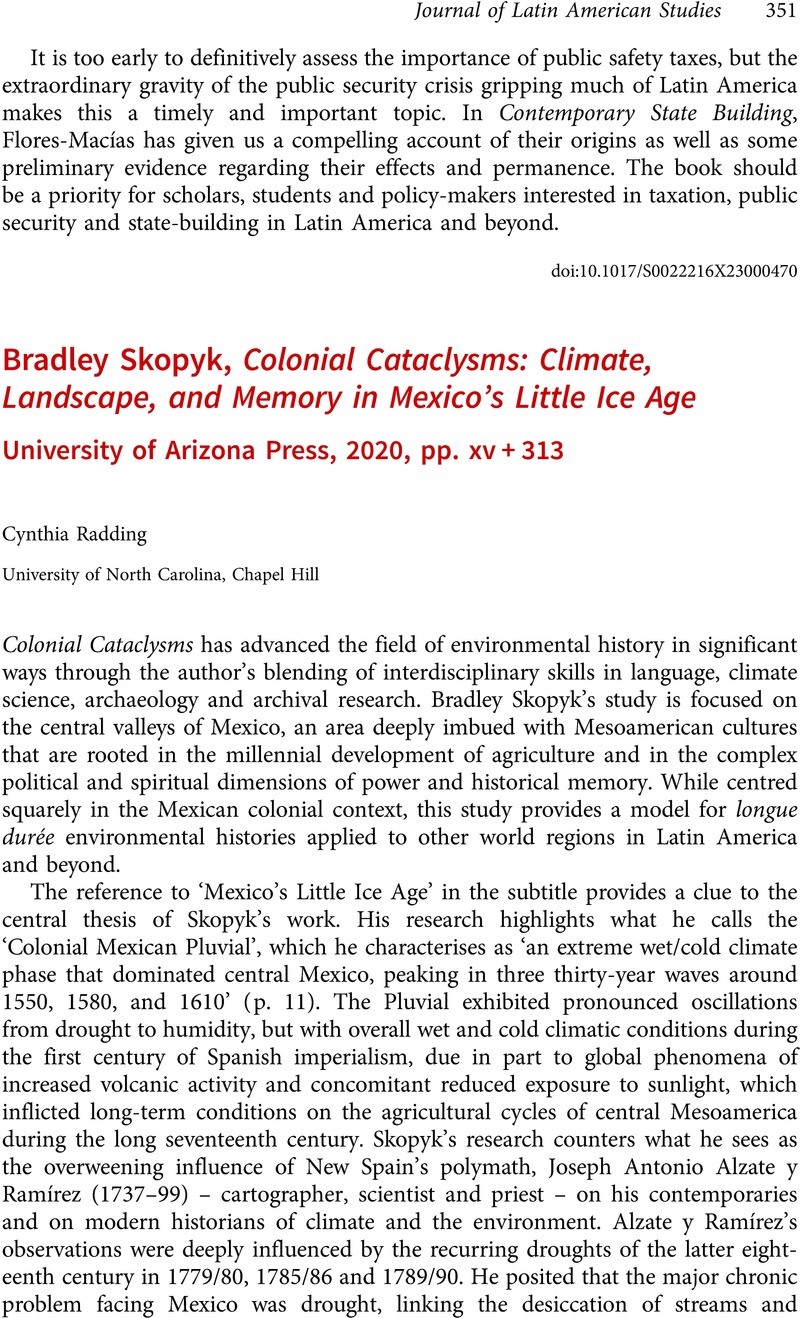No CrossRef data available.
Article contents
Bradley Skopyk, Colonial Cataclysms: Climate, Landscape, and Memory in Mexico's Little Ice Age University of Arizona Press, 2020, pp. xv + 313
Review products
Bradley Skopyk, Colonial Cataclysms: Climate, Landscape, and Memory in Mexico's Little Ice Age University of Arizona Press, 2020, pp. xv + 313
Published online by Cambridge University Press: 19 June 2023
Abstract
An abstract is not available for this content so a preview has been provided. Please use the Get access link above for information on how to access this content.

- Type
- Reviews
- Information
- Copyright
- Copyright © The Author(s), 2023. Published by Cambridge University Press



